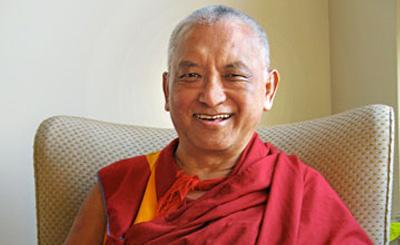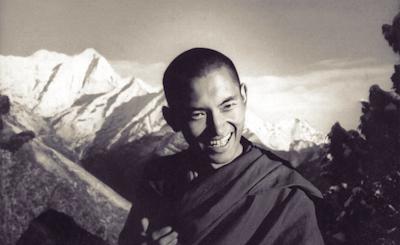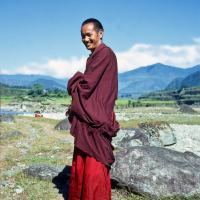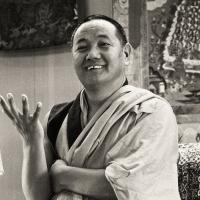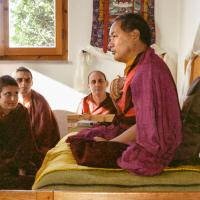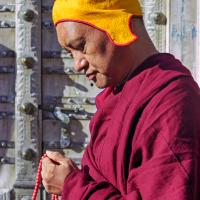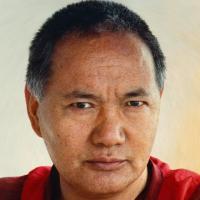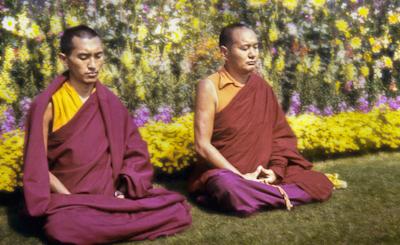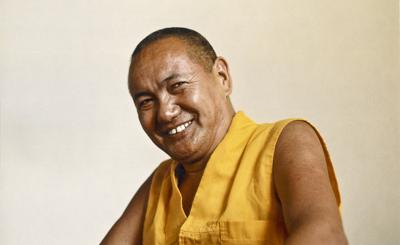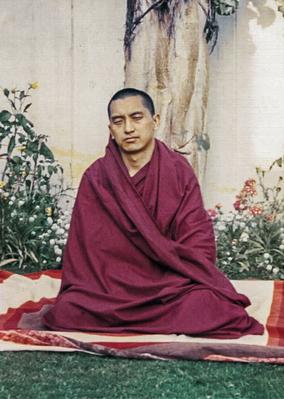I should begin by recalling how Tushita Mahayana Meditation Centre started. It was in January 1977 at our Kopan Monastery, near Kathmandu, Nepal, that my late teacher, Lama Yeshe, who was also kinder to me than the buddhas of the past, present and future, first suggested that we start a center in Delhi. Lama said that he wanted to repay the kindness of the Indian people.
How had the Indian people been kind? Well, leaving aside the fact that according to the Mahayana teaching all sentient beings have been kind, Tibetans identify several particular kindnesses shown to them by the Indian people. The most immediate, of course, was that of giving Tibetan refugees a home in 1959, after the occupation of our country by the communist Chinese, and thereafter allowing us the freedom to preserve our culture and practice our religion completely unfettered. This is an enormous kindness…not just to Tibetans but to the entire world as well.
More generally, because India is where Lord Buddha lived and taught and is the source of the Buddhadharma, Tibetans have always held the “Land of the Aryas” in high esteem. We have also been extremely grateful to India for facilitating the transmission of the Dharma teachings to Tibet, starting in the year 650 CE, by sending teachers to Tibet, training Tibetan scholars in India, and essentially providing the Tibetan script, which is based on Sanskrit and was developed in order to translate Buddhist scriptures into Tibetan. Although we speak of “Tibetan” Buddhism, the Buddhism of Tibet is essentially Indian Buddhism, especially that which His Holiness the Dalai Lama calls the Nalanda Tradition. In Tibet, for teachings to be accepted as authentic, they had to be shown to have a pure Indian source. Along with Nalanda, the other great Indian monastic universities of Odantapuri and Vikramashila served as the inspiration for the great monastic universities of Tibet.
Buddhism flourished in the land of its origin for some 1,500 years, and around the time it reached its zenith in India, the transmission to Tibet began. As a result, the Buddhism that went to Tibet over a period of some five centuries contained all three vehicles—the Hinayana sutra, the Mahayana sutra (Paramitayana) and tantra (Vajrayana). In Tibet, as Buddhism declined in India and was essentially destroyed, Dharma flourished for a thousand years, until in Tibet it too was largely destroyed by external forces.
Therefore, the main kindness that Lama Yeshe was wanting to repay by establishing Tushita as a teaching and meditation center, where Indian people could once again study and practice Indian Buddhism as it had been preserved developed in Tibet, was that of India’s providing Dharma to Tibet in the first place.
In 1959, after the failed uprising against Chinese oppression, His Holiness the Dalai Lama, his two tutors Kyabje Ling Rinpoche and Kyabje Trijang Rinpoche, many other high lamas and one hundred thousand ordinary Tibetans fled for safety to India, bringing with them centuries of learning and experience. Many of them settled in Dharamsala, after the Indian government offered them facilities in that area.
Lama Yeshe himself had a retreat center there, but when it came to starting a teaching center for the benefit of Indians, he chose New Delhi, which was where many people resided and was a great crossroads for many teachers and travelers. Accordingly, he sent the Australian monk, Dr. Nick Ribush, to India to work with an Indian student, Sunita Kakaria, to establish Tushita in New Delhi. It took them over two years to find a suitable location, but eventually a beautiful house was chosen in the suburb of Shantiniketan, and in the summer of 1979, Tushita Mahayana Meditation Centre opened.
Right from the start, the center began inviting some of the greatest Tibetan lamas in exile to teach there and hosted many other Tibetan teachers as well as Indian and Western scholars, offering a full programme of teaching and meditation. Among the lamas who taught there were His Holiness’s two tutors, Tsenshap Serkong Rinpoche, His Holiness Zong Rinpoche, Geshe Rabten, Geshe Sopa and Geshe Dhargyey. Lama Yeshe also taught there many times and we were very fortunate that Gelek Rinpoche was resident in New Delhi at that time and he was Tushita’s most regular teacher for several years.
In 1981, Lama Yeshe invited His Holiness the Dalai Lama to launch what he envisioned would become a regular event, Tushita’s Dharma Celebration. Unfortunately His Holiness was not available that year but the then home minister, former president Giani Zail Singh, accepted Lama’s invitation to be the guest of honour at a wonderful event held at the Hotel Oberoi.
However, the following year His Holiness was able to attend and participate in a teaching event at the Hotel Ashoka. Following many previous directors, Dr. Renuka Singh took over the running of Tushita and has ably continued the tradition of regularly inviting His Holiness to preside over these occasions.
Therefore, again, it is my pleasure to invite you to enjoy this book, which contains teachings by some of the teachers who visited Tushita in the early years.
– Lama Zopa Rinpoche







